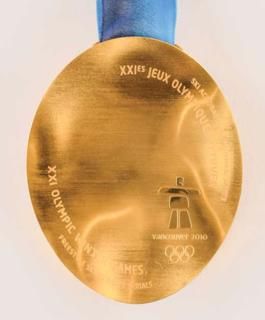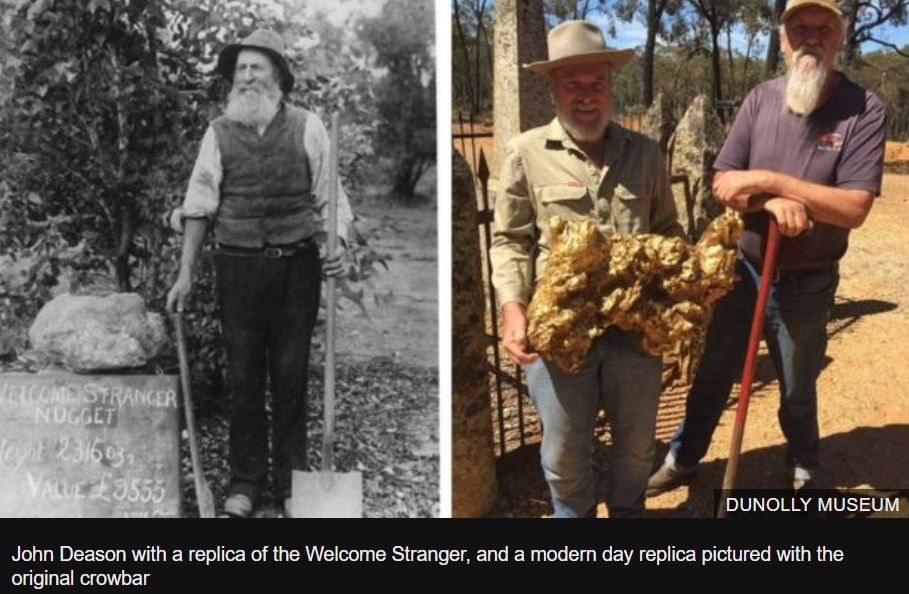The Allure of Gold

Human fascination with gold is as old as recorded history. We don’t know for sure when the first human picked up a gold nugget and thought, “Hey, this is pretty cool.” However, flakes of gold have been found in Paleolithic caves dating back as far as 40,000 B.C.
The first firm evidence we have of human interaction with gold occurred in ancient Egypt around 3,000 B.C. Gold played an important role in ancient Egyptian mythology and was prized by pharaohs and temple priests. It was so important, in fact, that the capstones on the Pyramids of Giza were made from solid gold. (Credit: bebusinessed.com)

Sadly we cannot admire these capstones today, however the funeral mask of King Tutankhamen is a fabulous example to showcase Egyptian gold and craftmanship.

As much as the Egyptians loved gold, they never used it as a bartering tool. The first known civilization to use gold as a form of currency was the Kingdom of Lydia, an ancient civilization centred in western Turkey.
Later on in history, the ancient Greeks viewed gold as a social status symbol and as a form of glory amongst the immortal gods and demigods. Mortal humans could use gold as a sign of wealth and gold was also a form of currency. Contrary to what you might think, the Olympics tradition of giving out gold medals to victors did not begin until the modern Olympics and has little to do with Greek tradition.(Credit: bebusinessed.com)



Gold is also mentioned in the Bible, where Genesis 2:10-12 describes the lands of Havilah, near Eden, as a place where good gold can be found. Incans, Aztecs, and numerous other civilizations also used gold prolifically throughout the early history, including it in religious ceremonies and in famous architectural designs.(Credit: bebusinessed.com)

There’s one common trend across all ancient civilizations: gold is a status symbol used to separate one class from another. From emperors to priests to the elites and upper middle class, those who held gold also tended to hold power.(Credit: bebusinessed.com)
In today’s world gold holds the same status. Not only in jewellery but also art works. Gustav Klimt used gold and silver when painting The Kiss.

Sculptures, furniture, fabric embedded with gold thread, buildings adorned with gold leaf – every aspect of art and life is considered more desirable when made or enhanced with gold.
The English language is peppered with illustrious idioms related to gold - Heart of gold; All that glitters is not gold; As good as gold. I am sure you can think of others.


Here are some fun facts about gold1 :
- Gold has been discovered on every continent on earth.
- Gold is edible.
- Our bodies contain about 0.2 milligrams of gold, most of it in our blood.
- Small traces of gold have been found in the leaves of Eucalyptus trees.
- Gold is extremely ductile. A single ounce of gold (about 28 grams) can be stretched into a gold thread 5 miles (8 kilometers) long. Gold threads can even be used as embroidery thread.
- Gold is the most malleable element (a measure of how easily a material can be hammered into thin sheets). A single ounce of gold can be beaten out into a sheet that is 300 square feet. A sheet of gold can be made thin enough to be transparent. Very thin sheets of gold may appear greenish blue because gold strongly reflects red and yellow.
As with other places around Australia and the world, it is no wonder that thousands of people rushed to the goldfields of Victoria –the allure of finding gold with the hope of instant riches.
The Welcome Nugget, said to be the largest gold nugget in the world, was found in the Ballarat area, weighing at 68kgs in June 1858. From 1851 to 1896 the Victorian Mines Department reported around 1,898,391kgs of gold was found in Victoria.

Even today the quest continues and only last week a retiree found a 2kg nugget – said to be worth around $AU160,000.
If you have been bitten with Gold Fever, head to Ballarat and chance your luck with finding your own nugget😊
Credits:
1 factslides.com/s-Gold and Thoughtco.com)
